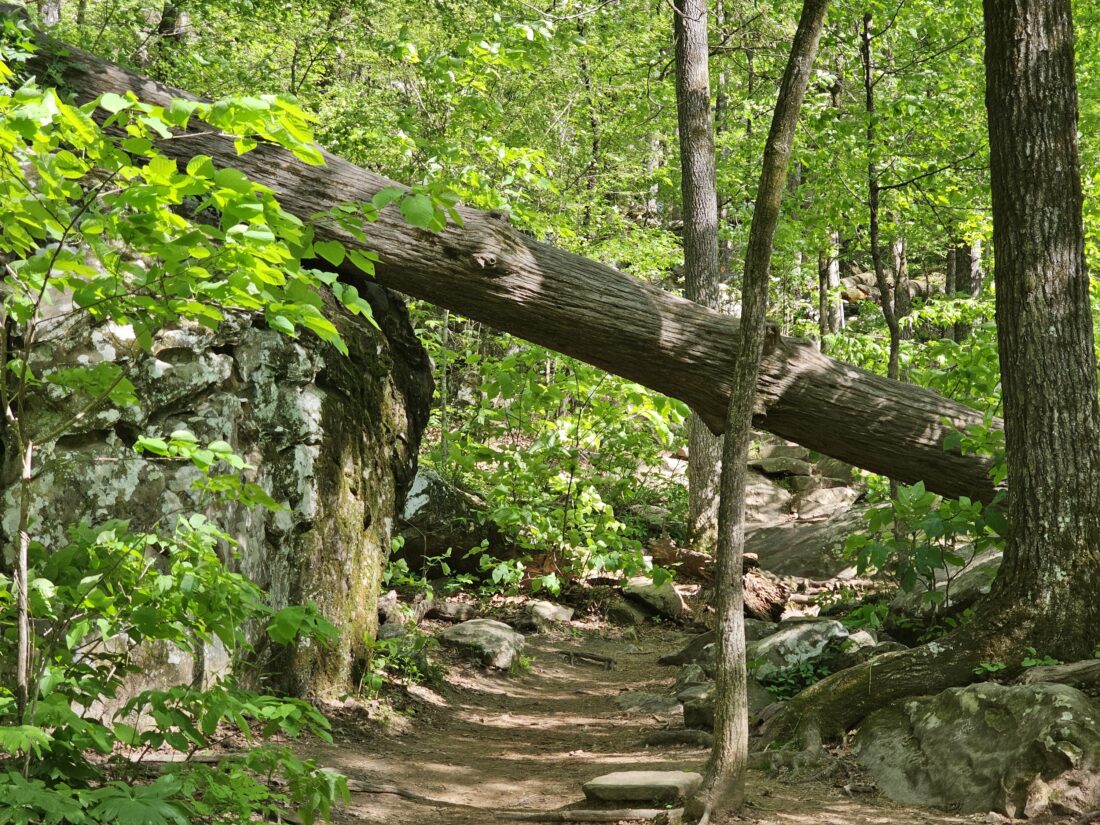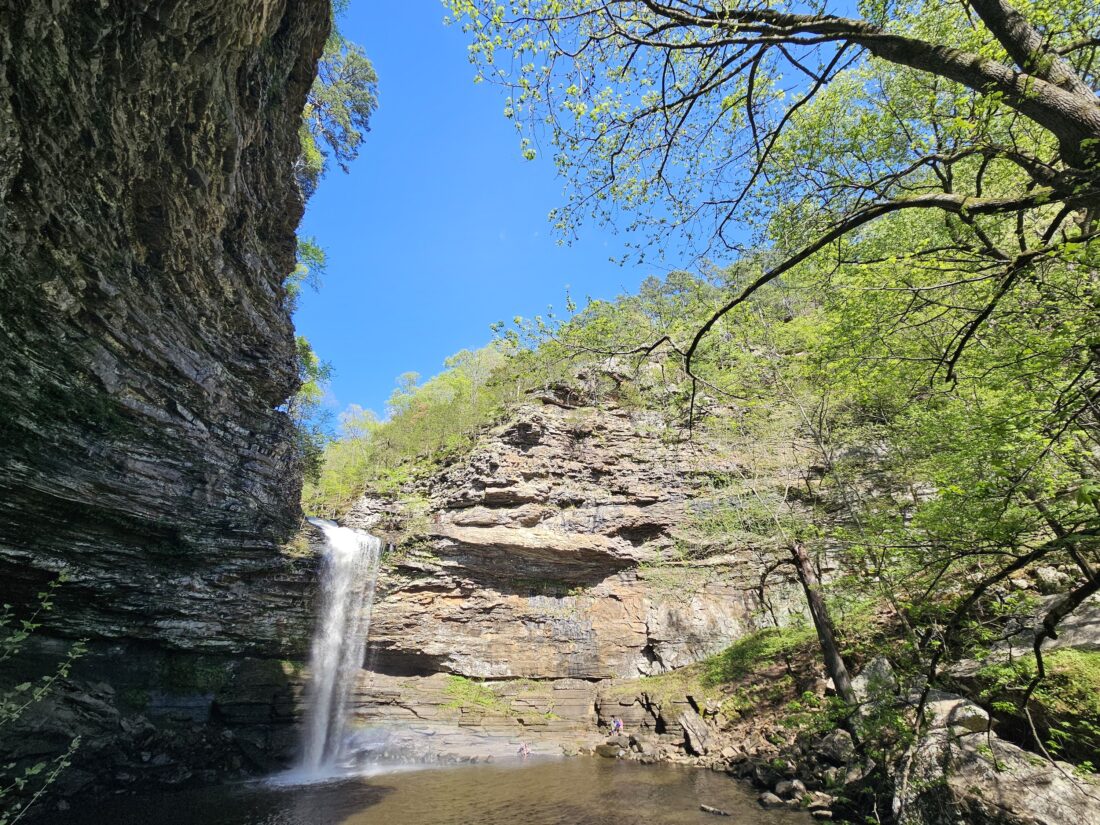
My favorite old photo is a Polaroid of my parents, young and in checkered flannel, grinning at the camera while on a hike at Petit Jean State Park. Recently, I took my husband there for his first visit—an Arkansas rite as a newly minted couple.
Petit Jean Mountain, after all, takes its name from a romantic piece of Natural State folklore. The best-known version goes something like this: A young French explorer named Chavet was bound to set sail to the New World and refused to take his fiancee, Adrienne, with him on the dangerous mission. Determined, Adrienne disguised herself and gained a place on the ship as a cabin boy whom the crew called Petit Jean, or Little John. The party eventually arrived in Arkansas at present-day Petit Jean Mountain (actually a plateau), and Adrienne took suddenly, gravely ill. Her identity came to light, and the lovers were reunited shortly before she died. “Legend has it that the spirit of Petit Jean hangs over the mountain, giving it a strange air of enchantment,” proclaims a plaque at her purported gravesite.

Whether that tale is true or not—my husband remarked that I probably wouldn’t have married him if he failed to recognize me with a different haircut—the mountain is steeped in history. Bluff-dwelling Native Americans called Petit Jean home thousands of years ago, and in 1832, the Cherokee passed by it during their forced march west on the Trail of Tears. Settlers first arrived in 1845, and in 1907, a campaign kicked off to designate the mountain as a national park. Instead, it became Arkansas’s first state park in 1923 and today reigns as one of the state’s most popular outdoor spots.
The 3,471-acre spread is filled with forests, waterfalls, creeks, rock formations, and drop-off cliffs. Situated between the Ozark and the Ouachita Mountains, the plateau is strewn with boulders and layered with shales and sandstones on display along blufflines on its twenty-four miles of trails. Locals from Little Rock and Conway often drive up for the day, but the park has a national reach, too—nearly a million visitors come through annually.

On our last trip, my husband and I spun through the visitor center, admired Lake Bailey, sat under the spray of the ninety-five foot Cedar Falls, sipped lemonade at Mather Lodge, gobbled down homemade fudge from a country outpost, and admired spectacular views of my home state from Stout’s Point. Spirit of Adrienne or otherwise, it was enchanting. And we snapped a selfie or two—the modern-day equivalent of my parents’ Polaroid.
A Day at Petit Jean
Hike breakdown: Of the eight trails, Cedar Falls is the most popular (and the most crowded). It starts behind Mather Lodge and makes a rocky descent before winding cheerfully along Cedar Creek until it hits a ninety-five foot waterfall finale. In a time crunch, the half-mile Bear Cave Trail offers gigantic sandstone boulders ripe for the clambering, and the Rock House Cave Trail—showcasing Native American drawings—is a must for history buffs. My overall favorite, though, is the 4.5-mile Seven Hollows Trail, which follows leafy forests, blufflines, tumbling water, caves, and a natural arch through the mountain’s seven canyons carved by streams over 300 million years. It was an exploration of this area that initially inspired the mountain’s protection as a park.
Species to spot: Petit Jean is home to black bears, red foxes, and spotted salamanders, but the stars of the show are the birds. Besides year-round residents like quail, white-throated sparrows, red-bellied woodpeckers, brown creepers, and American goldfinch, migratory species like summer tanagers and pine siskins pass through seasonally, as do bald eagles.
Best view: Stout’s Point is the first turnoff on the right as soon as you’ve wound up the road onto the mountain. From its rocky outcroppings, visitors watch the Arkansas River snake in giant curves through its impossibly green valley, and Petit Jean’s gravesite presides over the views.

What to eat: Mather Lodge’s soaring ceilings, high windows, and log beams are all made from native stone and wood. The restaurant has views over Cedar Creek Canyon—perfect for lunch, dinner, or a post-hike snack of hot water cornbread and a local beer. On your way off the mountain, stop at the Outpost County Store. A visitor could leave with anything from chowchow to an Amish hams to bootstrap molasses, but the can’t-miss item is the creamy homemade fudge, in any flavor (the chocolate walnut is my favorite).
Where to stay: Petit Jean is an easy day trip from Little Rock, but if the park’s dark skies, perfect for stargazing, are enough to warrant staying over, Mather Lodge has twenty-four rooms, and there are additional cabins, yurts, and campgrounds.








